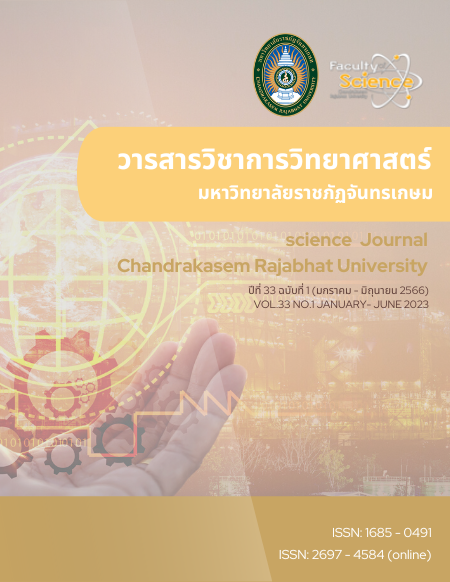The Comparison of Knee Angle while Foot placed on the Starting Block among Shin and Dominant Length on Ability to Produce Force in Young Swimmers
Keywords:
Swim, Swim Start, Peak Force, Rate of Force DevelopmentAbstract
The aim of this study was to compare the relative peak force and rate of force development between the dominant and shin-length feet placed on the starting block in youth swimmers. By using selective sampling, 11 swimmers from the Pathumwan school club at Srinakharinwirot University were selected. The kick start position was shown by participants during the first week of data collection, and their back leg's knee angle was measured. After that, IMTP testing with a similar knee angle was performed. Participants exhibited the kick start posture on the starting block the following week while data collection was taking place, and they also measured the back leg's knee angle. After that, IMTP testing with a similar knee angle was performed. The mean, standard deviation, and comparison of the data were determined using the paired simple T-test and the Wilcoxon signed rank test, with statistical significance set at the 0.05 level. The findings demonstrated that there was no statistically significant difference at 0.05 between the dominant and shin lengths of feet placed on the starting block in terms of relative peak force or rate of force development because the length and knee angle were the same. Although, the results were no different between dominant and shin length, shin length showed slightly higher in relative peak force and rate of force development. Additionally, coaches and sports scientists should continue to emphasize the value of lower-body strength and power and include it in training plans.
References
Arellano, R., Pardillo, S., De La Fuente, B., & García, F. (2000, 25-30 June ). A system to improve the swimming start technique using force recording, timing and kinematic analyses. 18 International symposium on biomechanics in sports, Hong Kong, China.
Cicenia, A., Oster, C., & Mokha, M. (2019). Kick plate position and track start biomechanics in elite swimmers. Journal of Exercise and Nutrition, 2(3), 12.
Cossor, J., & Mason, B. (2001). Swim Start Performances at the Sydney 2000 Olympic Games. 19 International symposium on biomechanics in sports, San Francisco, USA.
Fédération Internationale De Natation. (2022). Swimming world records. https://www.fina.org/
Hannula, D. L., & Thornton, N. (2001). The swim coaching bible (Vol. 1). Human Kinetics, Inc.
Hay, J. C. (1993). The biomechanics of sports techniques (Vol. 4). Benjamin-Cummings publishing company, USA.
Honda, K., Sinclair, P., Mason, B., & Pease, D. (2010). A biomechanical comparison of elite swimmers start performance using the traditional track start and the new kick start. XIth International symposium on biomechanics and medicine in swimming, Oslo, Norwegian
Kiuchi, H., Nakashima, M., Cheng, K. B., & Hubbard, M. (2010). Modelling fluid forces in the dive start of competitive swimming. Journal of Biomechanical Science and Engineering, 5(4), 314-328. https://doi.org/10.1299/jbse.5.314
Miller, M., Allen, D., & Pein, R. (2003, June 21-23 ). A kinetic and kinematic comparison of the grab and track starts in swimming. IXth International symposium on biomechanics and medicine in swimming, Saint-Etienne.
Okuno, K., Ikuta, Y., Wakayoshi, K., Nomura, T., Takagi, H., Ito, S., Ogita, F., Ohgi, Y., Tachi, M., Miyashita, M. (2002). Stroke characteristics of world class male swimmers in freestyle events of the 9th FINA world swimming championships 2001 Fukuoka. IXth International symposium on biomechanics and medicine in swimming, University of Saint-Etienne, France.
Slawson, S. (2010). A novel monitoring system for the training of elite swimmers Loughborough University]. Loughborough University, United Kingdom.
Slawson, S., Chakravorti, N., Conway, P., Cossor, J., & West, A. (2012). The effect of knee angle on force production, in swimming starts, using the OSB11 block. Procedia Engineering, 34, 801-806. https://doi.org/10.1016/j.proeng.2012.04.137
Taber, C., Bellon, C., Abbott, H., & Bingham, G. E. (2016). Roles of maximal strength and rate of force development in maximizing muscular power. Strength & Conditioning Journal, 38(1), 71-78. https://doi.org/10.1519/SSC.0000000000000193
Tor, E., Pease, D., & Ball, K. (2014). Characteristics of an elite swimming start. XIIth International symposium for biomechanics and medicine in swimming, Canberra, Australian.
Tor, E., Pease, D. L., & Ball, K. A. (2015). Key parameters of the swimming start and their relationship to start performance. Journal of sports sciences, 33(13), 1313-1321. https://doi.org/10.1080/02640414.2014.990486
Vantorre, J., Chollet, D., & Seifert, L. (2014). Biomechanical analysis of the swim-start: A review. Journal of sports science & medicine, 13(2), 223-231.
Welcher, R. L., Hinrichs, R. N., & George, T. R. (2008). Front-or rear-weighted track start or grab start: which is the best for female swimmers? Sports biomechanics, 7(1), 100-113. https://doi.org/10.1080/14763140701683247
West, D. J., Owen, N. J., Cunningham, D. J., Cook, C. J., & Kilduff, L. P. (2011). Strength and power predictors of swimming starts in international sprint swimmers. The Journal of Strength & Conditioning Research, 25(4), 950-955. https://doi.org/10.1519/JSC.0b013e3181c8656f
Downloads
Published
How to Cite
Issue
Section
License
Copyright (c) 2023 Chandrakasem Rajabhat University

This work is licensed under a Creative Commons Attribution-NonCommercial-NoDerivatives 4.0 International License.
บทความที่ได้รับการตีพิมพ์เป็นลิขสิทธิ์ของมหาวิทยาลัยราชภัฏจันทรเกษม
ข้อความที่ปรากฎในบทความแต่ละเรื่องในวารสารวิชาการเล่มนี้เป็นความคิดเห็นส่วนตัวของผู้เขียนแต่ละท่าน ไม่เกี่ยวข้องกับมหาวิทยาลัยราชภัฏจันทรเกษม และคณาจารย์ท่านอื่นในมหาวิทยาลัยแต่อย่างใด ความรับผิดชอบองค์ประกอบทั้งหมดของบทความแต่ละเรื่องเป็นของผู้เขียนแต่ละท่าน หากมีความผิดพลาดใดๆ ผู้เขียนแต่ละท่านจะรับผิดชอบบทความของตัวเองแต่เพียงผู้เดียว




 For Author
For Author


